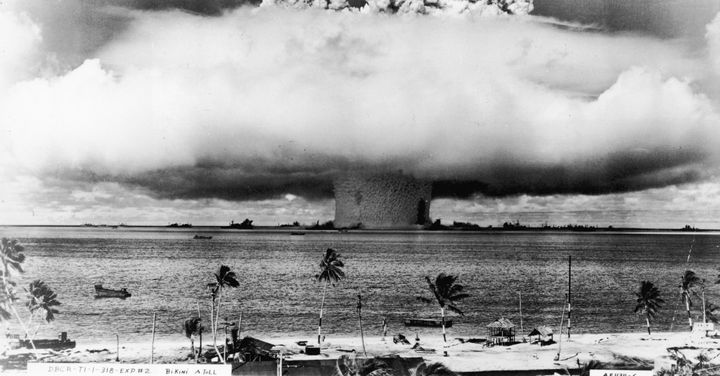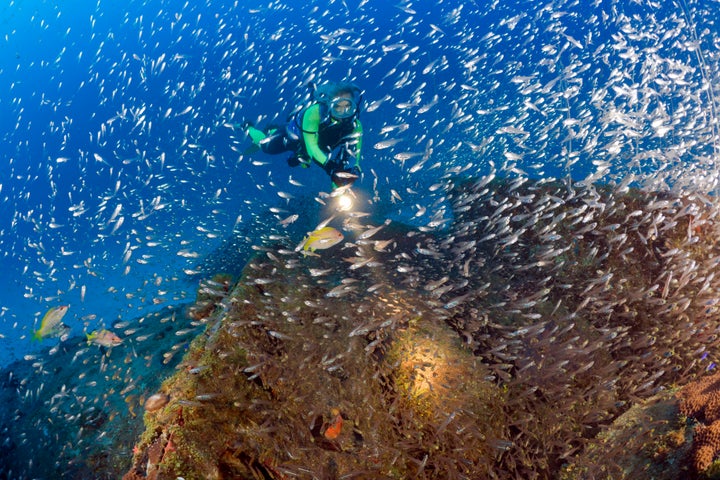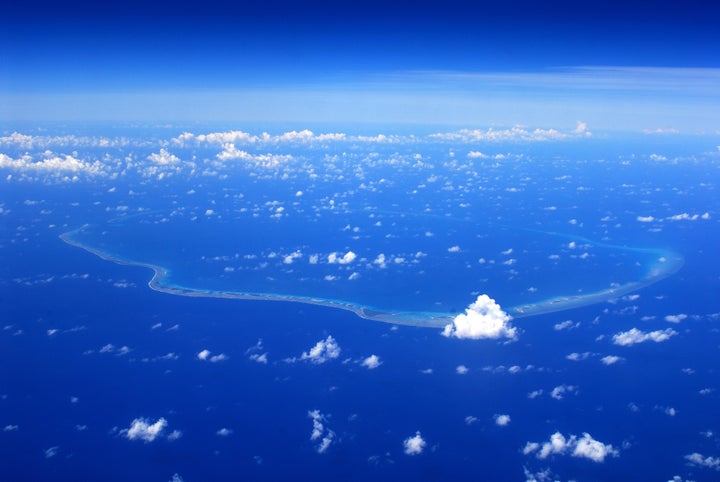

When the United States government persuaded residents of Bikini Atoll in the Marshall Islands to leave their homes, they were told they’d be able to return as soon as the nuclear tests were over.
Seventy years have passed since those promises, and the chain of islands remain deserted. Although residents are desperate to return, it appears the time has not yet come for the long-anticipated homecoming.
A study published this week said the remote atoll may still be too radioactive for inhabitation. Researchers who traveled to Bikini last year discovered radiation levels higher than those allowed by minimum safety standards. However, neighboring atolls were significantly less nuclear -- a positive sign after decades of upheaval for the region's former residents.
EVACUATIONS, THEN EXPLOSIONS
In 1946, the U.S., who’d taken control of the Marshall Islands from the Japanese after World War II, urged the inhabitants of Bikini Atoll -- who had sustainably lived off the land and fished and sailed in the surrounding waters -- to evacuate before atomic testing could commence. The residents were told that testing the bombs was for “the good of mankind and to end all world wars.”
“We had to move so they could test their weapon. It was a hard question, but we felt we had no choice,” Jackson Laiso, who was a boy during the evacuation, told Outside magazine in 2012.
On March 1, 1954, the U.S. detonated the 15-megaton hydrogen bomb known as Castle Bravo on Bikini Atoll. Equivalent to more than 1,000 Hiroshima-type bombs, it was the most powerful explosion ever detonated by the U.S.
As part of the Cold War nuclear arms race, the U.S. would end up dropping a total of 23 nuclear weapons on Bikini between 1946 and 1958. These tests, and many others in the area, required hundreds of people from Bikini and its neighboring atolls, including Rongelap and Enewetak, to leave.
It would be temporary, the Americans promised the islanders.
Yet Bikinians didn't return home until the early 1970s, when they were told it was safe to resettle. Then in 1978, the residents were evacuated again after “alarming” increases of the radioactive isotope cesium 137 were recorded in the bodies of people living on the island.
Today, Bikini remains uninhabited, although occasional diving trips are organized for small groups of tourists keen to explore what’s been called one of the most stunning dive sites and beaches on Earth.

TOO MUCH RADIATION?
A team of researchers led by Emlyn Hughes, a physics professor at Columbia University, visited the Marshall Islands last August to measure gamma ray emissions on the atolls of Bikini, Rongelap and Enewetak.
The measurements they took on the three atolls were then compared with gamma ray readings from Majuro Atoll in the southern Marshall Islands, a control island for the study, and readings taken at Central Park in New York City.
Majuro Atoll and Central Park were found to have an average of 9.5 and 100 millirems of radiation per year, respectively. Central Park's elevated reading may be due to the abundance of granite in the park, the researchers said.
Of the three atolls, Enewetak, which was the site of extensive cleanup effortsover the years, had the lowest levels of radiation, with an average of 7.6 millirems per year. Rongelap recorded slightly elevated levels at 19.8 millirems. Both of these atolls had radiation levels well under the 100 millirems per year safety standard set by the U.S. and the Republic of the Marshall Islands, the researchers said.
Enewetak is currently inhabited in parts by a struggling local community. Rongelap has seen some resettlement efforts in recent years.
Bikini Atoll, on the other hand, gave an average reading of 184 millirems of radiation per year. Some parts of the island had readings of more than 640 millirems.
“This finding suggests that Bikini Island exceeds [the safety] standard and may not be safe for habitation,” the study authors said.
Still, the radiation levels found on Bikini were not considered "terribly dangerous," noted a press release for the study. This is a potentially positive sign for the many Bikinians who want to return home after decades of exile.

LINGERING EFFECTS OF TESTING
The scientists stressed that more research needed to be conducted to determine whether Bikini and the surrounding atolls were safe for resettlement.
While Enewetak and Rongelap appeared to have “safe” levels of gamma ray emissions, the radiation measurements did not consider “other exposure pathways -- for example, possible contamination of the food that local residents were eating. In the 1970s, for instance, it was discovered that cesium 137 had contaminated the food chain on Bikini Atoll. That’s how the dangerous isotope had found its way into the bodies of the islanders who’d moved back there.
As such, the researchers said they were not able to make a determination as to whether these islands were safe for habitation.
“There is a population currently living on Enewetak, in some trepidation as to whether or not their environment is safe. In addition, there is currently a large population of displaced Marshallese people who desire to return to Rongelap and Bikini. Given these circumstances, it seems imperative that further steps be taken to analyze additional exposure pathways to make a definitive statement as to whether these islands are safe for habitation,” the authors wrote.
UNESCO has declared Bikini Atoll to be a World Heritage Site, a reminder of the lingering impacts of the Cold War and the nuclear arms race.
--
Measurement of background gamma radiation in the northern Marshall Islands was published this week in the "Proceedings of the National Academy of Sciences of the United States." Read the full report here.